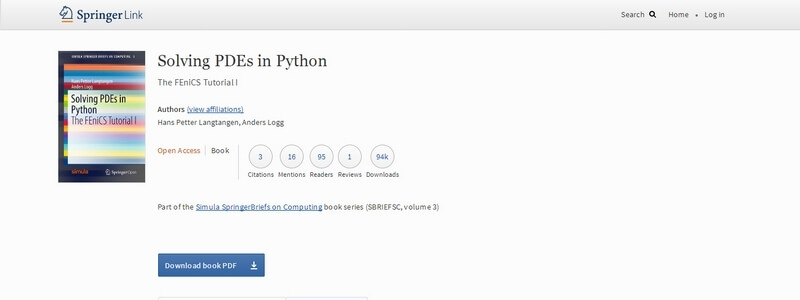This book offers a concise and gentle introduction to finite element programming in Python based on the popular FEniCS software library. Using a series of examples, including the Poisson equation, the equations of linear elasticity, the incompressible Navier’stokes equations, and systems of nonlinear advection’diffusion’reaction equations, it guides readers through the essential steps to quickly solving a PDE in FEniCS, such as how to define a finite variational problem, how to set boundary conditions, how to solve linear and nonlinear systems, and how to visualize solutions and structure finite element Python programs.
Our aim with the series Simula SpringerBriefs on Computing is to provide compact introductions to selected fields of computing. Entering a new field of research can be quite demanding for graduate students, postdocs, and experienced researchers alike: the process often involves reading hundreds of papers, and the methods, results and notation styles used often vary considerably, which makes for a time-consuming and potentially frustrating experience. The briefs in this series are meant to ease the process by introducing and explaining important concepts and theories in a relatively narrow field, and by posing critical questions on the fundamentals of that field. A typical brief in this series should be around 100 pages and should be well suited as material for a research seminar in a well-defined and limited area of computing.




